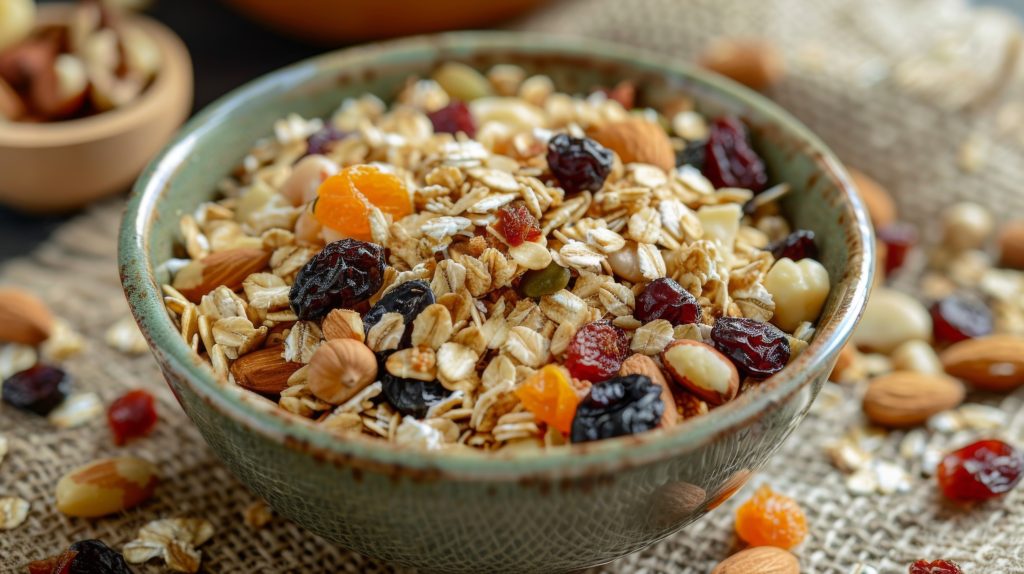Introduction to the importance of blood sugar regulation
Are you keeping a close eye on your blood sugar levels? Understanding the role of fiber in managing diabetes can make a significant impact on your health journey. Let’s delve into the fascinating world of fiber and how it plays a crucial role in regulating blood sugar levels for overall well-being.
What is fiber and why is it important for blood sugar regulation?
Fiber is a type of carbohydrate found in plant-based foods like fruits, vegetables, whole grains, nuts, and seeds. Unlike other carbs, fiber isn’t fully broken down by the body during digestion. Instead, it passes through the digestive system largely intact.
There are two main types of fiber: soluble and insoluble. Soluble fiber dissolves in water to form a gel-like substance that helps slow down digestion and regulate blood sugar levels. On the other hand, insoluble fiber adds bulk to stool and promotes regular bowel movements.
When it comes to blood sugar regulation, fiber plays a crucial role by slowing down the absorption of glucose into the bloodstream after meals. This helps prevent sudden spikes in blood sugar levels and keeps them more stable throughout the day.
Incorporating an adequate amount of fiber into your diet can contribute to better overall blood sugar control and reduce your risk of developing conditions like diabetes or insulin resistance over time.
Types of fiber: Soluble vs Insoluble
Fiber comes in two main types that play distinct roles in our bodies: soluble fiber and insoluble fiber. Soluble fiber dissolves in water to form a gel-like substance, which helps slow down digestion. This type of fiber can be found in foods like oats, nuts, seeds, beans, and some fruits. On the other hand, insoluble fiber doesn’t dissolve in water and adds bulk to your stool. It’s commonly found in whole grains, vegetables, and wheat bran.
Soluble fiber is known for its ability to help lower blood sugar levels by slowing down the absorption of glucose into the bloodstream. It also aids in reducing cholesterol levels and promoting a healthy gut microbiome. Insoluble fiber contributes to digestive health by supporting regular bowel movements and preventing constipation.
Both types of fibers are essential for overall well-being as they each serve unique purposes within the body’s digestive system!
How does fiber help regulate blood sugar levels?
Fiber plays a crucial role in regulating blood sugar levels by slowing down the absorption of glucose in the bloodstream. Soluble fiber, found in foods like oats, beans, and fruits, forms a gel-like substance that traps sugars and slows their release into the blood. This helps prevent spikes in blood sugar after meals.
Insoluble fiber, present in whole grains and vegetables, adds bulk to stool and promotes healthy digestion. By aiding in proper digestion, insoluble fiber can also contribute to more stable blood sugar levels. Both types of fiber work together to maintain balanced glucose levels throughout the day.
Incorporating high-fiber foods into your diet can lead to better glycemic control and reduce the risk of developing conditions like diabetes. By choosing whole foods rich in fiber over processed options, you can support your overall health and well-being.
The recommended daily intake of fiber
Are you aware of how much fiber you should be consuming daily to support your blood sugar regulation? The recommended intake can vary depending on factors like age, gender, and overall health. However, a general guideline suggests that adults aim for around 25-30 grams of fiber per day.
For women, the recommended daily amount is about 21-25 grams, while men may need slightly more at around 30-38 grams. It’s essential to spread out your fiber intake throughout the day rather than consuming it all at once to help maintain stable blood sugar levels.
Increasing your fiber intake gradually can also help prevent digestive discomfort like bloating or gas. Remember to stay hydrated when increasing fiber in your diet as water helps move fiber through the digestive system effectively. Incorporating a variety of high-fiber foods into your meals can make reaching your daily target easier and more enjoyable.
Foods high in fiber and their impact on blood sugar levels
When it comes to managing blood sugar levels, incorporating foods high in fiber can play a crucial role. Fiber-rich foods like fruits, vegetables, whole grains, legumes, and nuts help slow down the absorption of sugars into the bloodstream. This gradual release of glucose prevents sudden spikes in blood sugar levels.
Soluble fiber found in foods like oats, barley, and beans forms a gel-like consistency in the digestive tract. This gel slows down digestion and helps regulate blood sugar levels more effectively. On the other hand, insoluble fiber found in wheat bran and vegetables adds bulk to stool and aids in maintaining stable blood sugar levels.
Including a variety of high-fiber foods in your diet not only supports better blood sugar control but also promotes overall health. So next time you’re planning your meals, remember to add plenty of fiber-rich options for optimal well-being!
Fiber supplements for blood sugar regulation
When it comes to managing blood sugar levels, fiber supplements can be a beneficial addition to your diet. These supplements are convenient for individuals who may struggle to get enough fiber from their regular meals alone.
Fiber supplements come in various forms such as powders, capsules, or chewable tablets. They provide a concentrated source of fiber that can help regulate blood sugar by slowing down the absorption of glucose into the bloodstream.
It’s essential to choose high-quality fiber supplements from reputable brands to ensure effectiveness and safety. Be sure to follow the recommended dosage instructions provided on the product packaging or by your healthcare provider.
Incorporating fiber supplements into your daily routine can help support overall digestive health while also contributing to better blood sugar control. Remember, these supplements should complement a balanced diet rich in whole foods for optimal results.
Tips for incorporating more fiber into your diet
Looking to boost your fiber intake for better blood sugar regulation? Here are some simple tips to help you incorporate more fiber into your daily diet.
Start your day off right by choosing high-fiber breakfast options like oatmeal, whole grain toast, or chia seed pudding. These choices can kickstart your fiber intake early in the morning.
Snack smartly with fruits like apples, berries, and pears which are excellent sources of natural fiber. You can also opt for raw veggies or a handful of nuts for a crunchy and satisfying snack.
Incorporate more legumes like beans, lentils, and chickpeas into your meals. They not only add a substantial amount of fiber but also provide plant-based protein to keep you full longer.
Swap out refined grains for whole grains whenever possible. Choose brown rice over white rice or opt for quinoa instead of pasta for an extra fiber punch in your meals.
Experiment with adding flaxseeds, chia seeds, or hemp seeds to salads, smoothies, or yogurt bowls for an extra boost of fiber without much effort.
Potential risks and side effects of consuming
Potential risks and side effects of consuming
While fiber is essential for blood sugar regulation and overall health, consuming too much fiber too quickly can lead to uncomfortable side effects such as bloating, gas, cramping, and diarrhea. It’s important to gradually increase your fiber intake and drink plenty of water to help prevent these issues.
Additionally, individuals with certain medical conditions like irritable bowel syndrome (IBS) may need to be cautious with their fiber consumption as it could exacerbate symptoms. Consulting with a healthcare provider or dietitian before making significant changes to your fiber intake is recommended, especially if you have any underlying health concerns.
By understanding the role of fiber in blood sugar regulation and making informed choices about incorporating more fiber-rich foods into your diet gradually, you can positively impact your blood sugar levels and overall well-being in the long run. Remember that balance is key when it comes to maintaining a healthy lifestyle!



